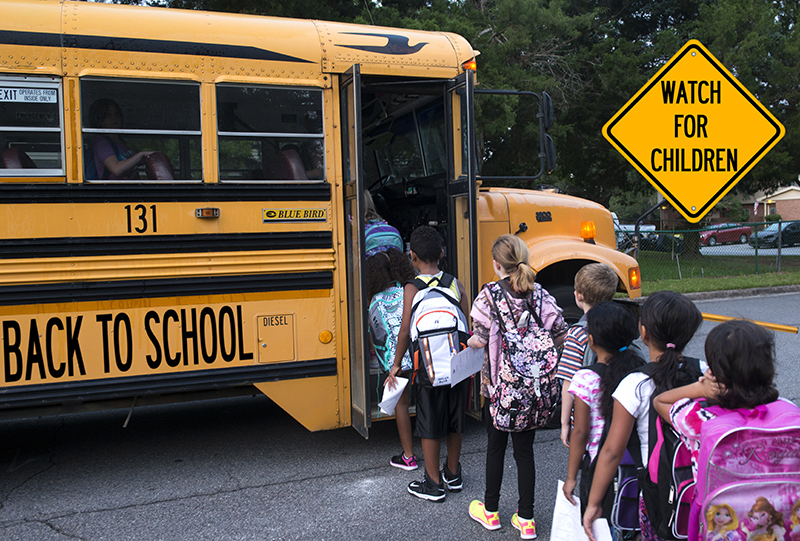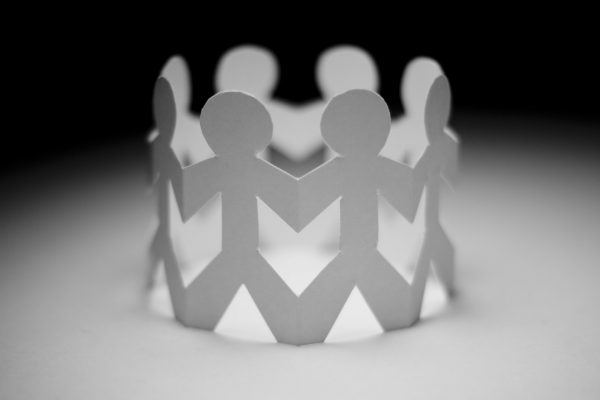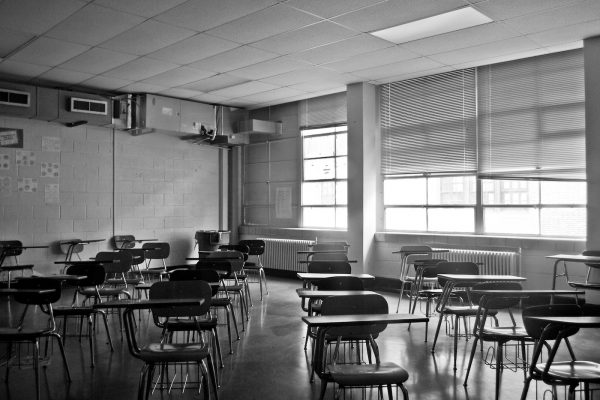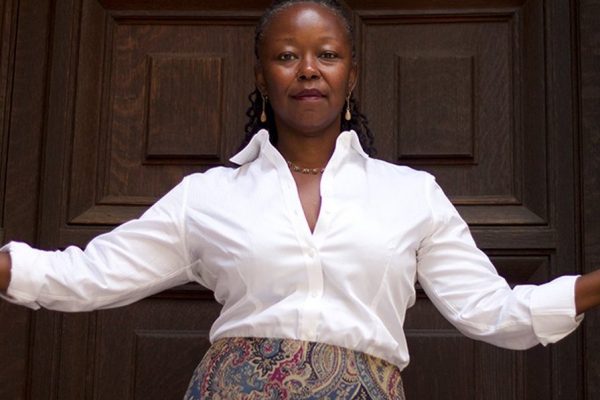In 1954 the Supreme Court ruled in Brown v. Board of Education that the segregation of schools was unconstitutional, but in fact schools have barely desegregated in the last half century. When the Court pumped the breaks on the process in 1955 by clarifying that school districts needed only to move with “all deliberate speed,” whatever that meant, it made space for most cities simply to do nothing for over a decade. The 1957 desegregation battle in Little Rock caught the nation’s attention, but the city’s choice the following year simply to close all its public schools made plain the durability of the desire for segregated schools—and not only in the South, as quickly became clear. Brown v. Board was followed by a nationwide rise of Christian private schools, which kept white children in all-white educational spaces. And as histories of conservatism have demonstrated with exacting detail—from Kevin Kruse’s White Flight (2005) to Stacie Taranto’s Kitchen Table Politics (2017)—the movement of whites to the suburbs was also explicitly, although not exclusively, about creating all-white educational spaces.
De facto school segregation perpetuates the intergenerational reproduction of racial hierarchy.
Declining school funding, exacerbated by white flight, then devastated many districts. Urban public schools became known as “troubled” or “failing,” with blame falling on both starved cities and black parents for not doing enough for their children. The handmaiden of this was the rise of neoliberalism, which argued across the board for replacing state support with private investment, said to be both more efficient and profitable. The advancement of charter schools as a solution to failing public schools reflects this logic.
But charter schools do nothing to address how structural racism underpins the problem of failing schools. One of the key mechanisms of this structural racism is that while the United States federally mandates public education, most funding for it comes from local property taxes. This arrangement inherently favors white-dominated districts, which tend also to have higher property values. A second mechanism is that in less racially homogeneous districts, wealthier whites often remove their children from public schools and send them instead to private “good schools”—which just so happen to skew disproportionately white. The cumulative effect is a U.S. education landscape that clusters around two poles: struggling schools composed disproportionately of students of color, and much better schools that are disproportionately white.
De facto school segregation perpetuates the intergenerational reproduction of racial hierarchy in at least two ways. The first is obvious: students of color receive worse education than white students. Second, in both formal and informal ways, school is where students learn about race—one of many indispensable lessons of Margaret Hagerman’s White Kids: Growing Up with Privilege in a Racially Divided America (2018), which examines how white privilege and white racial ideology are produced among the next generation of the nation’s elite.
Focusing on a pseudonymous midwestern town (probably Madison, Wisconsin, based on demographic data in the book), Hagerman explores how racial thinking develops among wealthy white children ages ten to thirteen. Young people learn racial ideology from a variety of sources: family, friends, popular culture, the media. By the time they finish elementary school, they have a pretty sophisticated racial ideology. Of course, no one reproduces their environment exactly, and the students Hagerman studies arrive at ideas that span the political spectrum. But almost none develop a meaningful critique of structural racism, question their own privilege, or think seriously about how to combat racial prejudice. These children may oppose overt racism, but they also see themselves as deserving of every advantage they have received.
Hagerman explains that children’s racial ideologies are shaped in part by conversations among their parents and friends about the quality of schools. When exposed to conversations that evaluate various districts in terms of crime and lost educational opportunities, they are astute enough to detect when “good” is equated with “white.” And likewise that “bad” schools are those with large numbers of black children, where students are said to be loud and unruly. Race thus gets conjoined with normative ideas of respectable behavior, safety, and educational opportunity.
Of course, the problem here does not rest with the children. By and large, white people simply do not have serious conversations about race. As Hagerman documents, many white parents become uncomfortable when discussing racism. Victoria, a wealthy conservative, told Hagerman: “Race isn’t really a part of my children’s experience, so we don’t really talk about it. While some people try to play the race card, things are pretty much equal nowadays.” She then added, “I guess there will always be those who want something for nothing.” Hagerman documents many cases where a superficially color-blind racial ideology papers over a deeper aversion to serious discussion of inequality and outright hostility toward policies such as affirmative action.
The white children Hagerman studied opposed overt racism, but they also saw themselves as deserving of every advantage they have received.
And it is hardly better in the schools. Often educators, uncomfortable with discussions of race and untrained in how to teach about it, instruct that any talk of race or racial disparity is itself racist—or at least this is the lesson many children internalize. This silencing of racial discussion allows differences to fester and harden. In such an environment, the term “racist” becomes little more than a joke insult for students to lob at one another, leading one school to go so far as to ban students from using the word. This is a disheartening symptom of the failure of the nation to respond to the resurgence of white nationalism with terminology that accurately describes it.
After all, how different is the definition of “racist” used by most white adults? Is it not mostly treated as an insult voided of any semantic or evaluative import? In politics as much as in private life, bad actors loudly proclaim that they are not racists, as if whether you are or are not is a matter of your own opinion about yourself. The only “racism” many will even deign to acknowledge is the racism supposedly directly against whites. Such claims of so-called “reverse” racism would be absurd if they didn’t deepen the impact of actual racism.
This is not only a problem on the right. On the left, white liberals are prone to discussing racism as though it never touches down into their daily lives and choices. It has nothing to do, for example, with the choice many make to send their children to nearly all-white schools: they are just doing what is “best for their children.” As if, in a society dominated by white supremacy, what is best for one’s children and racial logic are mutually exclusive. One of Hagerman’s key points is that racial ideology is something that falls on a continuum and manifests differently in different sorts of parents—ranging from outright racism, at one extreme, to removing your child from a bad school to give them more opportunities, on another. But all of these choices help stack the deck against students of color who are left behind.
Parents claim to want diversity for their children, but in practice opt out of the public goods that resemble the diverse spaces they crave.
Repeatedly, Hagerman demonstrates how wealthy white liberal parents either fail to see their role in de facto segregation or excuse it away. Even in the most left-leaning towns Hagerman studies, white parents say they value diversity and know that raising their children surrounded by other rich kids—even if some of them are people of color—reinforces racial and class divides. But in the same breath, they regretfully note that there is nothing they can do because they have an obligation to give their children the best education possible. As one parent tells Hagerman, she doesn’t want to make her child a “guinea pig.” The mother knows white flight undermines the idea of an equal education, but what can she do? In one telling anecdote, a father who tells Hagerman how much he loves Michelle Alexander’s The New Jim Crow (2010) still sends his children to private schools because public schools can’t give his kids everything he thinks they need. These parents claim to want diversity for their children, but in practice opt out of the public goods that resemble the diverse spaces they crave.
Hagerman includes a chapter on the compensatory strategies parents use to expose their children to the diversity they do not get at school—mainly volunteer work and international travel. She concludes that most of these only reinforce white privilege—encouraging white students to develop an ideology of their own special power to change the world. In Hagerman’s words, the result is “kids who can speak fluently and critically about race and racial inequality in the United States but who simultaneously believe they are better and more deserving than anyone else.”
• • •
Hagerman concludes with a sobering epilogue. Four years after completing her initial research, she returned to interview her subjects once more. Most of the kids were now in high school, and their racial ideologies had hardened. If, at age twelve, they had been inclined to blame black children for their own troubles in school, they were even more convinced at age sixteen. On the opposite end, if they had viewed racism as a great evil when younger, many were now protesting at their high schools. But no one had transitioned to critiquing the white privilege of their everyday lives. As Hagerman notes of a student named William, who believes that white kids can serve as role models to black kids to help them achieve more, he “is still part of the problem of white supremacy,” reflecting a commitment to “white savior ideals.”
In a nation where parental involvement in education has an outsize role in outcomes, white parents can bear more responsibility for the choices they make for their children.
Hagerman offers few concrete solutions, outside of urging parents to engage their children in difficult conversations about race and to reflect on their own privilege. That’s fine—if there were obvious solutions, lots of people would press for them. But we have to start somewhere. In my view, that place is to consider how, in a nation where parental involvement in childhood education has an outsize role in educational outcomes, white parents can bear more responsibility for the educational choices they make for their children. To do that, we have to redefine how we talk about race and racism in white communities.
In addition to my day job as a history professor, I write for the liberal blog Lawyers, Guns, and Money. I grew up in a white working-class family and went to public schools in a struggling Oregon logging town in the 1980s and early 1990s. As such, I am a passionate defender of the potential of public schools to improve the lives of working-class children. I often blog about the intersection of race and schooling, as well as my outrage over the systematic gutting of the public education system alongside the rise of charter schools. In some of my posts, I argue, as Hagerman does, that the choices whites make for their children reinforce racial inequality. The fury these posts generate among commenters, who as a whole are upper middle-class white liberals, far surpasses the ire provoked by anything else on the blog. Many respond with outrage to the idea that anything they do for their children is racist, or that white supremacy shapes the options available to them, even as they and their children benefit from it every day.
The rhetorical backflips readers undertake to avoid the substance of this critique is often remarkable. Because I do not have children (Hagerman does not either), I have been repeatedly told that I have no right to discuss these issues. This sort of argument is hard to imagine in other contexts. Should I not argue for prison reform because I don’t know anyone in prison, or not argue against the Iraq War because I do not know Iraqis?
It is a horrible irony that large-scale divestment from public schools is being carried out by a generation of parents ardent about volunteering in schools.
Commenters also often fall back on the argument that they have a responsibility to protect their children and offer them the best opportunities. But in arriving at those judgments, parents rarely consider that, as Danielle Allen has argued, public education is, above all, about educating good citizens. Generally this is something that public schools, as microcosms of the public sphere, do better than private schools. Specific job-related skills are easier to acquire later in life than are empathy, tolerance of different cultural traditions, and the capacity to function smoothly in a multicultural society.
Finally, there is a tendency for commenters to frame schooling as a collective action problem. Yes, a single individual refusing to drive will not make an appreciable difference in carbon emissions; climate change is a problem that must be solved at scale. But education could not be more different: individual parents do have a huge impact on individual schools and districts. Little can do more to reform schools than the active participation of parents. It is a horrible irony that large-scale divestment from public schools is being carried out by a generation of parents ardent about volunteering in schools. Fundraisers, after-school activities, and sports teams take tremendous amounts of time, energy, and money from many parents I know. Imagine if all these resources benefitted not only individual children but were invested in rebuilding a public good.
White people have to take responsibility for their own privilege. Hagerman recommends self-reflective questions, and she is right to do so. But we also need more direct engagement of whites with other whites. It cannot be up to people of color to demand equity for themselves. Whites have to challenge each other about the ways their lives reinforce white supremacy. A key component of that must be for white parents to refuse to add to our nation’s racial disparity in how they raise their children.








